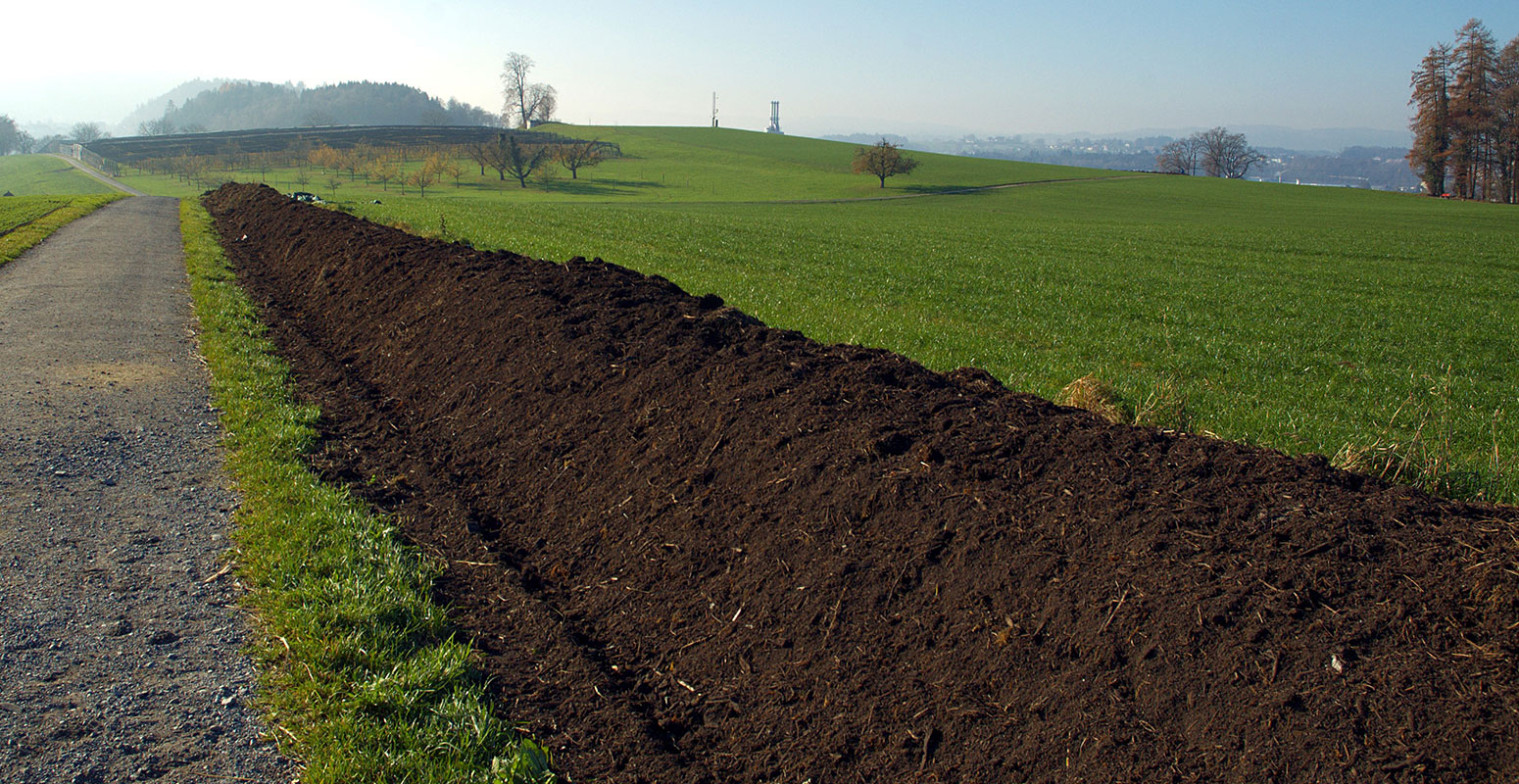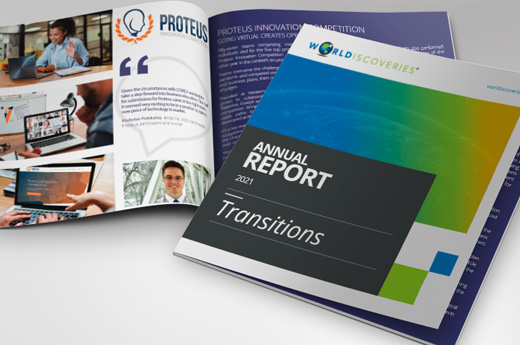From farm fields to lumber mills, a portable plant from Agri-Therm Inc. is ready to eat up the waste and spit out the oil
Jennifer MacDonald faced down the business moguls on CBC TV’s Dragons’ Den in 2006 and snagged a $200,000 investment for her Cenabal Gourmet Organics salad dressing in five minutes flat.
But securing $3 million in venture capital to build out a commercial green energy prototype is proving to be a much tougher proposition. “We are looking for money to accelerate the project,” says MacDonald, now the chief operating officer of Agri-Therm Inc., a company dedicated to developing, manufacturing and marketing portable equipment that produces bio-oils from agricultural waste. “And we really want to keep the investment in the company Canadian—and preferably from Ontario.”
What MacDonald has to offer in this “frugal investor economy” is made-in-London pyrolysis technology carefully incubated at The University of Western Ontario with a line-up of customers ready to take delivery when the first commercial units are available.
Pyrolysis is a process that converts raw biomass into a range of valuable and sustainable bio-oil products. By using agricultural waste instead of food crops, pyrolysis has the power of modern alchemy—a proven way to spin straw into gold.
Agri-Therm’s patented, mobile unit can be hauled from farm field to vineyard to lumber mill to process a wide range of biomass waste such as corn leaves and stalks, grape peels and wood chips. “There are millions of tons of biomass waste worldwide—this is not a food product,” explains MacDonald. “Mobility is our market niche. Biomass can be seasonal and expensive to remove.”
In pyrolysis, biomass is burned at high heat in the absence of oxygen. The resulting condensation becomes bio-oil, and a charcoal-like substance called biochar is the solid residue. Bio-oil can then be upgraded into value-added fuels and chemicals, including environmentally friendly insecticides and pesticides. Biochar becomes an ecologic additive to fertilizer.
What gives pyrolysis even more lustre is that it is a closed-loop system. Off-gases such as carbon monoxide and carbon dioxide are captured to fuel the combustion process.
Agri-Therm continues to leverage the expertise of a highly skilled biofuels research and development team located at Western’s Institute of Chemicals from Alternative Resources (ICFAR), led by engineering professors Franco Berruti and Cedric Briens, both global experts in pyrolysis. “Our location at ICFAR gives Agri-Therm a close link to a teaching university,” says MacDonald. “We are a small start-up with access to a huge research facility that pioneered this R&D.”
Paul Paolatto is CEO of Agri-Therm and executive director of WORLDiscoveries, the business development arm for UWO, Robarts Research Institute and the Lawson Health Research Institute. He says Agri-Therm has evolved from university R&D into an enterprise with potential for the local manufacturing economy.
“We need new manufacturing jobs for London,” says Paolatto. “Agri-Therm is building these jobs here and jobs at Abuma [Manufacturing Limited]. This is a homegrown renewable energy company designed for the export market.”
Specializing in custom metal fabrication for the military, energy and environmental sectors, Abuma Manufacturing is Agri-Therm’s production partner and builder of the company’s prototype units. “We had lots of run time and all kinds of experiments in the past year to build the second-generation system,” says MacDonald. “And we did extensive testing on the feeder, condensation train and fluidized bed reactor.”
Paolatto says Agri-Therm has benefited extensively from working with a manufacturer active in the global environmental products market. “We are lucky to have Abuma here,” he says. “If we had to build that expertise from scratch it would have killed us.”
Abuma was founded in 1982 by Jan Maarschalkerweerd, then a vice-president of Trojan Technologies and associate of Trojan founder Hank Vander Laan. According to Larry Gooder, the business development manager at Abuma, the company started out making parts for Trojan’s wastewater purification systems in Maarschalkerweerd’s garage and eventually grew into their pristine 100,000-square-foot facility on Admiral Drive—large enough to fabricate components for a long list of demanding clients.
“We can take Canadian inventions and validate them to production scale,” Gooder says.
Abuma’s relationship with Agri-Therm is the perfect example of how they like to work. “Companies come to us and ask if we can help solve a problem,” Gooder says about their win-win approach to contract manufacturing. “We helped [Agri-Therm] drive costs down by making a few changes. And if their price is more attractive they will order more.”
Gooder says the Agri-Therm unit has been re-engineered over the past few months, and the design has now been finalized. “The benefit of the product is that it is portable—you don’t need real estate to make it work,” he says. “There are lots of opportunities, and when the prototype is ready it will open up the floodgates.”
Agri-Therm is in the process of hiring a professional engineer to work with Abuma on a going-forward basis to hasten their commercial market launch. They expect the MPS200 series unit, capable of processing six tons of biomass per day, will be ready later this year. The first MPS200 unit is already slated for shipment to The University of Veracruz in Mexico, where it will be put to use in sugar cane fields.
“After 12 months of run time in the field, we’ll start the design-build for the third generation—the commercial model–with a 10-ton per-day capacity,” says MacDonald.
In terms of gauging demand for Agri-Therm’s technology, the biomass market potential is big, if not huge. “There is 1.4 billion tons of forestry waste alone per year globally and forestry products have the best heating value,” says MacDonald. “We need a small fraction of that. Just 1% of this forestry waste would keep 5,400 mobile pyrolysis units working full-time.”
Another benefit is that all pyrolysis byproducts have value. To that end, Agri-Therm has just hired a post-doctoral expert in biochar to focus on this promising application. “Lesser quality bio-oils can also be tweaked to produce higher quality biochar that can be sold as a fertilizer additive and for carbon capture,” says MacDonald. “There is much interest in char because when it is applied to substandard crop land, char helps retain water and greatly improves yield.”
MacDonald says other market segments are also being explored. “Animal renderings are promising, but still need research,” she says.
These are the challenges that inspire Federico Berruti, an Ivey graduate and PhD candidate in engineering (and son of Franco Berruti). Berruti is a vice president at Agri-Therm and the bridge between the firm’s technical and business sides. His PhD research is focused specifically on feeder and demisting technologies, two critical aspects that make the pyrolysis unit cost effective and energy efficient.
“I love small business. I have a vision of being an entrepreneur and an academic,” says Berruti, who holds a Vanier scholarship, a prestigious award that pays $50,000 per year to Canada’s top doctoral candidates.
In addition to Agri-Therm’s mobile pyrolysis plant, Berruti and his team are working on technologies that could be applied to future units and/or commercialized on their own. He believes the market opportunity is massive, with multiple streams.
“We can see working in the future with conventional oil companies,” says Berruti. “Our core competencies are with reactor design and R&D. We are not into [bio-oil] refining or transmission—we want our pyrolysis units in the field.”
On the horizon, there are North American companies building large fixed pyrolysis plants with a strategy to use the existing infrastructure of conventional oil refineries and pipelines to process, upgrade and transport bio-oil. “Bio-oil is acidic with a high water and oxygen content and needs to be upgraded,” MacDonald explains. “Upgrading [bio-oil] is not part of our business plan. But this is where our clients can send their bio-oil. And we can act as broker.”
The challenge with a fixed plant, says MacDonald, is that beyond 100 miles transporting biomass to the plant becomes unprofitable. “Our product will condense the biomass down into a low-volume, high-value product that can then be shipped to a centralized upgrading facility,” she says.
“By the time we are finished with our generation three prototype in 18 months, we are confident there will be a market for bio-oil.”
And as for our gas tanks, the pot of gold for just about any alternative oil-producing technology company, MacDonald adds, “Yes, we can see bio-oil going into our vehicles.”
(source: Business London)


